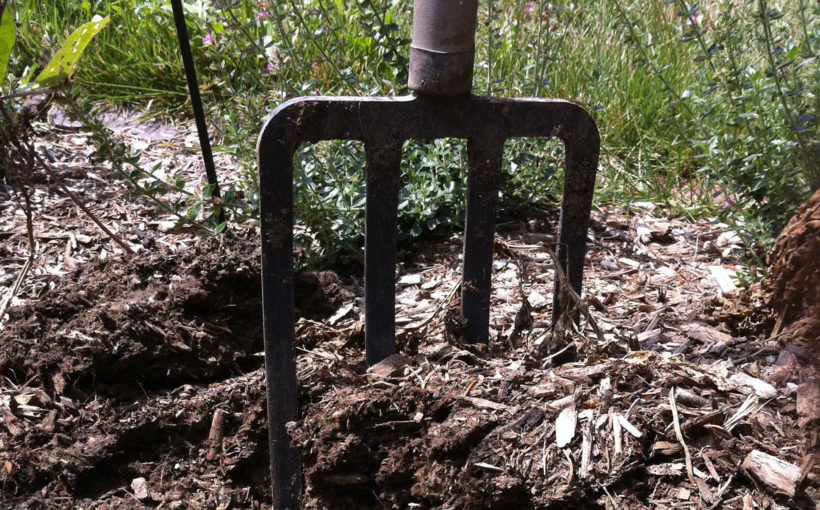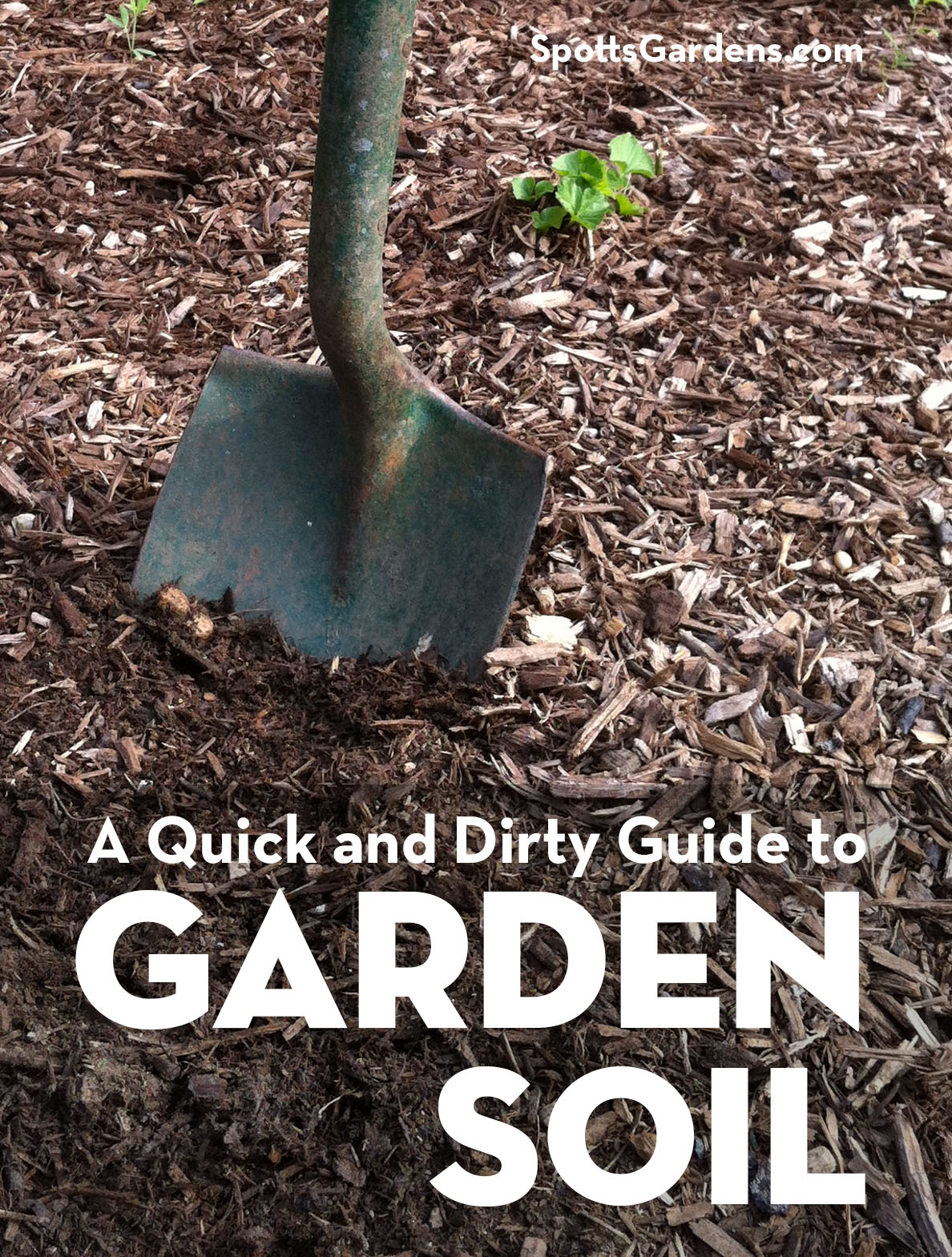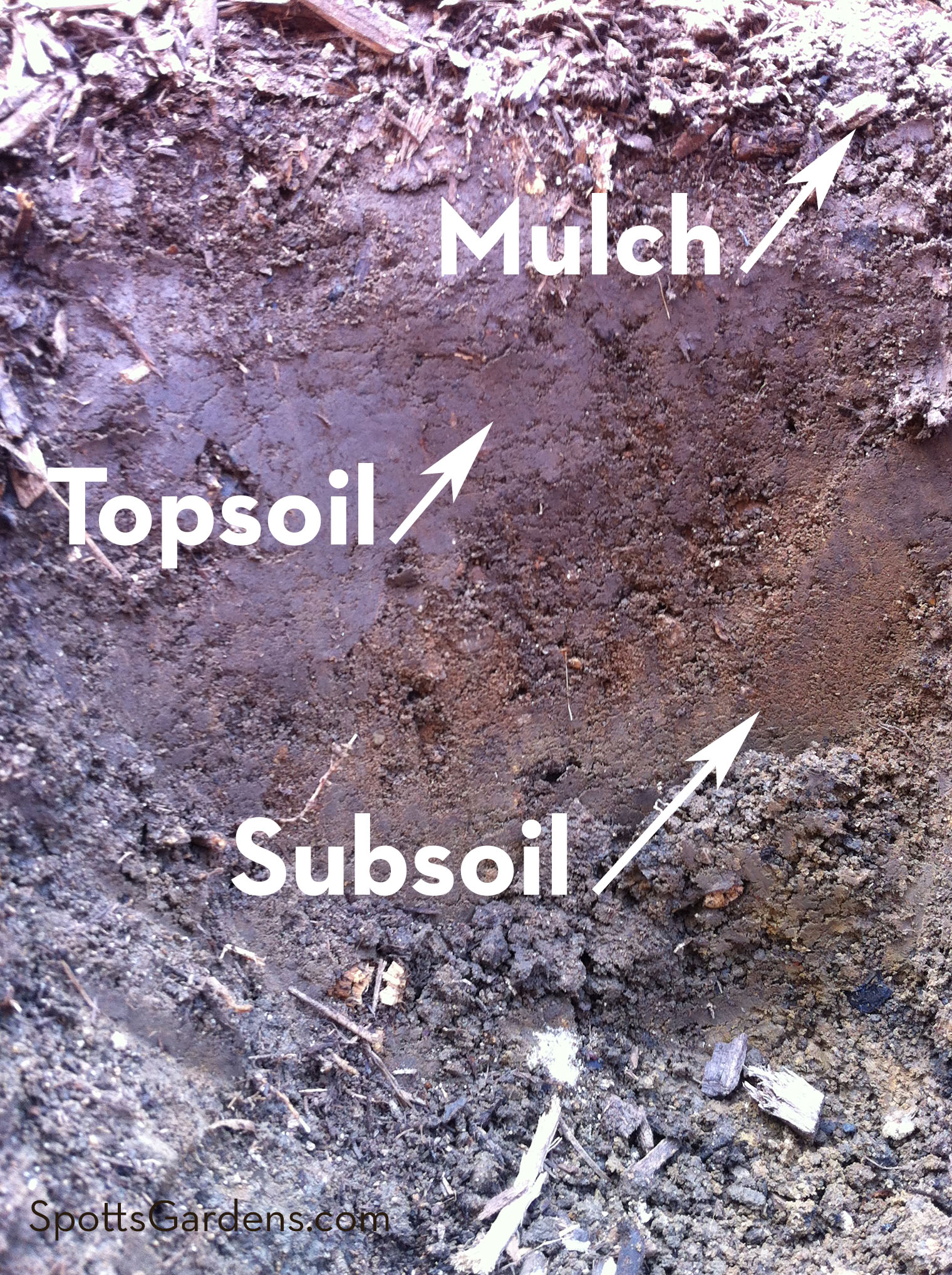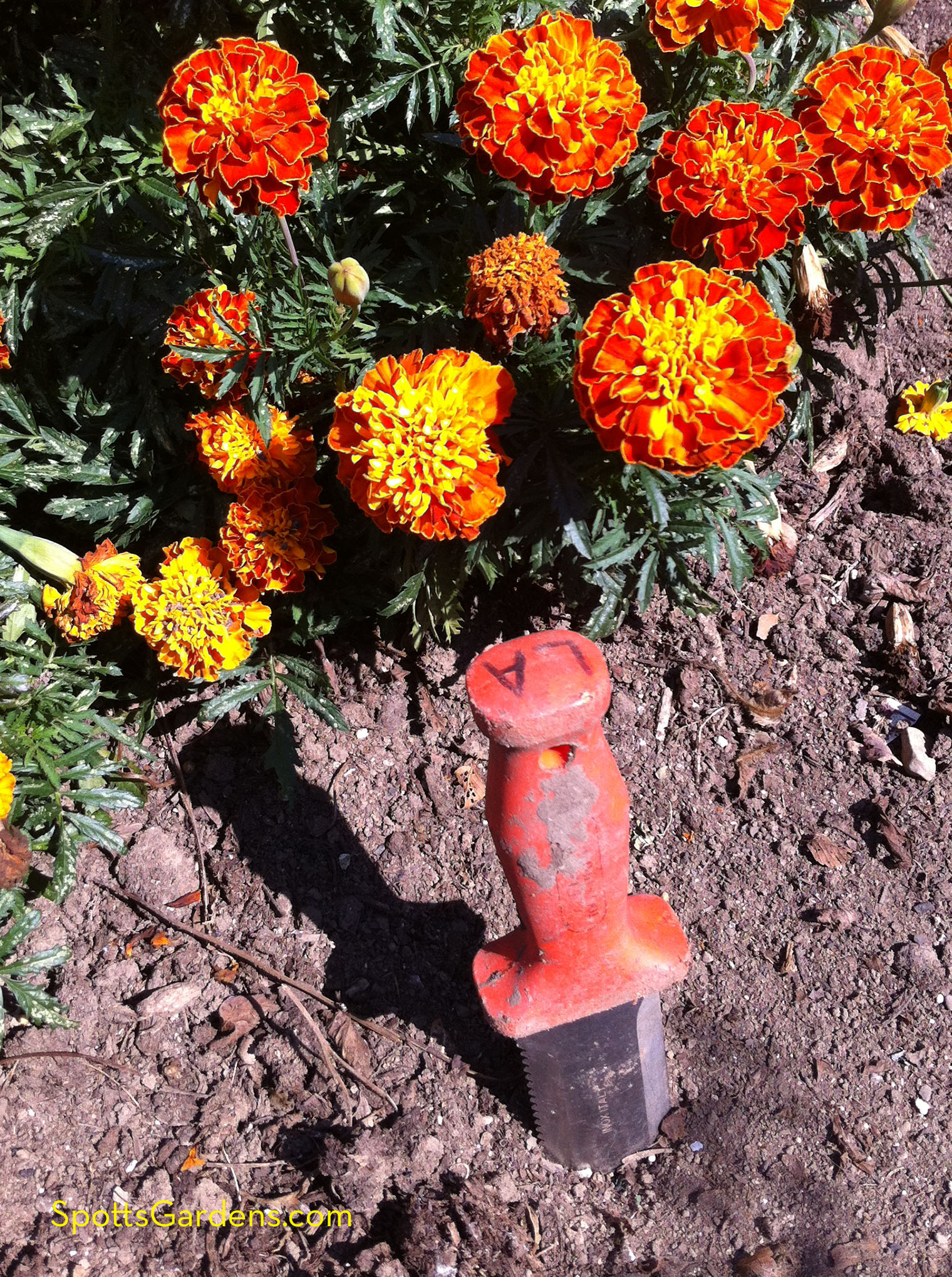Gardens do not have dirt. They have soil. And good gardeners pay close attention to the state of their garden soil.
Dirt is the stuff on your kitchen floor. Soil is a complex biological system of air, water, inorganic bits of rock, and organic material: decaying plant and animal matter. In addition, soil is home to earthworms, fungus, insects, and a host of microorganisms.
Soil is the medium that your plants grow in. Your plants’ ability to get the nutrients they need depends on the soil texture, how available nutrients are, and the pH, or level of acidity.
Soil is Like a Layer Cake
All soils are arranged in three layers: topsoil, subsoil, and the layer of rock that lies below the subsoil. In Indiana, that layer of rock is limestone.
Topsoil is the dark, crumbly layer of soil where all the action takes place. This is where plants have the majority of their roots, and where earthworms, insects, fungus, and microorganisms do their thing.
Subsoil is the layer below the topsoil. If you dig into your garden, you’ll see a clear break between the dark, rich topsoil and the thick, heavy subsoil. Here in central Indiana, that subsoil is clay.
Soil Types: Too Big, Too Little, Just Right
The type of soil is based on how tiny the particles are that make it up. Big particles, like those in sand, leave big spaces instead of packing together tightly. As a result, sandy soils drain very quickly, warm up quickly, and do not hold nutrients well.
Clay soils have tiny particles that pack together so closely there’s very little room between them for water and air. So while they are usually fertile, they tend to be slimy and cold when wet and hard-packed when dry. Water doesn’t drain well, so plants often have “wet feet,” or permanently wet roots, which can rot them.
Loam, however, is an ideal garden soil blend of just the right amounts of clay, sand, silt, and organic material. To improve sandy or clay soil and move it toward loam, incorporate lots of organic matter in the form of compost and mulch.
Humus: The Organic Part
The best garden soils are between about 5% and 10% humus, or rotted organic material. Adding organic matter (like leaf mould, compost, or well-rotted manure) to the soil improves the texture of soil, allows it to retain more water, and makes available to plants a host of nutrients.
To ensure that you return to the soil what the plants remove from it, plan to add compost to your beds. Use mulch too; an organic mulch—like hardwood, straw, or chopped up leaves—prevents erosion, retains moisture in the soil, and improves the soil texture as that material breaks down and becomes incorporated into the soil.
Good Nutrition
Plants need 13 nutrients that have to come directly from the soil (in addition to the carbon, hydrogen, and oxygen they get from air and water).
The macronutrients include the big three—nitrogen, phosphorus, and potassium—and the secondary nutrients—calcium, magnesium, and sulfur. The others are considered micronutrients. Check out a list of the nutrients and how they affect plants here.
Take the Test
The best way to get to know your soil is to take a soil test. Take soil samples from ten different places in your garden, then send them off to a lab. (We use A&L Great Lakes Laboratory.) Include what you’re planning to grow: perennials, vegetables, shrubs, etc.
The soil test will tell you the pH of your soil, the amount of organic matter, and the levels of macro- and micronutrients. It will also offer amendment suggestions, based on the plants you indicated you want to grow.
Get all the Dirt on Soil
For more about how soil pH affects your garden, check out Garden Soil pH: Blue Hydrangeas and Unhappy Azaleas.
Read up on applying amendments with How to Apply Amendments to Garden Soil.
And if you want help getting your garden soil into shape, contact Spotts Garden Service!



